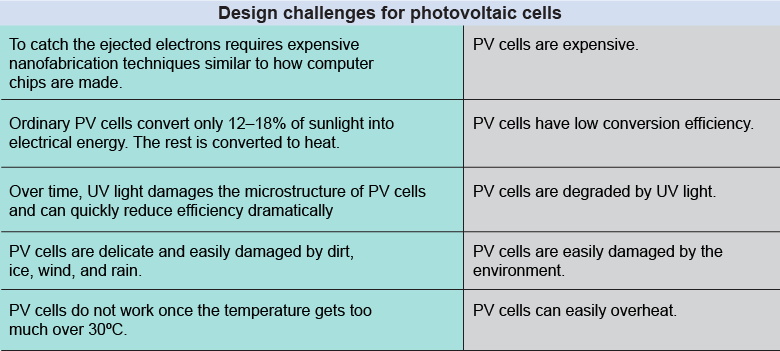|

|
A typical solar power installation for a house requires a few electrical devices in addition to the solar panels. Since the Sun only shines by day, a battery is needed to store electrical energy for use at night. The solar panels may produce extra electrical power during sunny days, which can be sold back to the main electrical grid, but during cloudy days more power may need to be drawn from the grid. A grid–tie inverter controls the interactions between the outside power grid and the electricity produced by the solar panels. 
|

|
The most efficient crystalline PV cells are made from single-crystal silicon that has been sliced into extremely thin wafers. Like glass, silicon crystal is very brittle and easy to crack. The wafers used for PV cells are typically 180–220 μm thick, about the same as two sheets of paper! A single crack can break the electrical connection and ruin the PV cell. For this reason, the brittle silicon wafers are encapsulated in a tough, transparent resin. Like the front sheet, the encapsulant resin must be transparent to light and it must not constrain the thermal expansion or contraction of the wafer over a wide range of temperature. 
|
Crystalline silicon is expensive to manufacture. A new form of PV technology called thin-film photovoltaics uses very thin layers of semiconductor materials, such as copper indium gallium selenide, deposited on a substrate. Thin-film PV cells are not as efficient but cost much less to manufacture. 
|
| |
|

